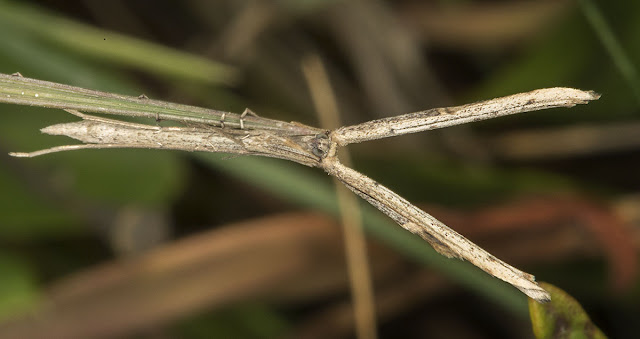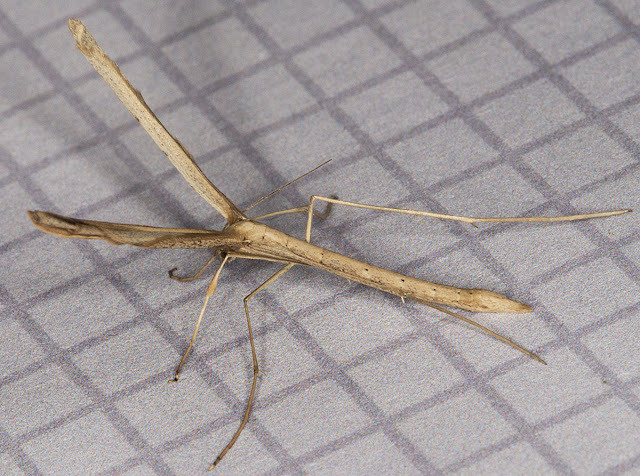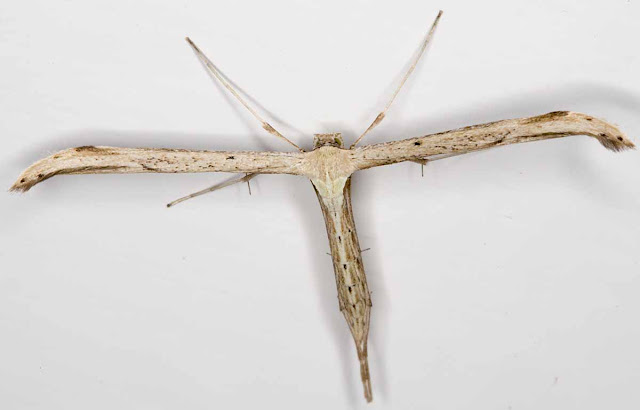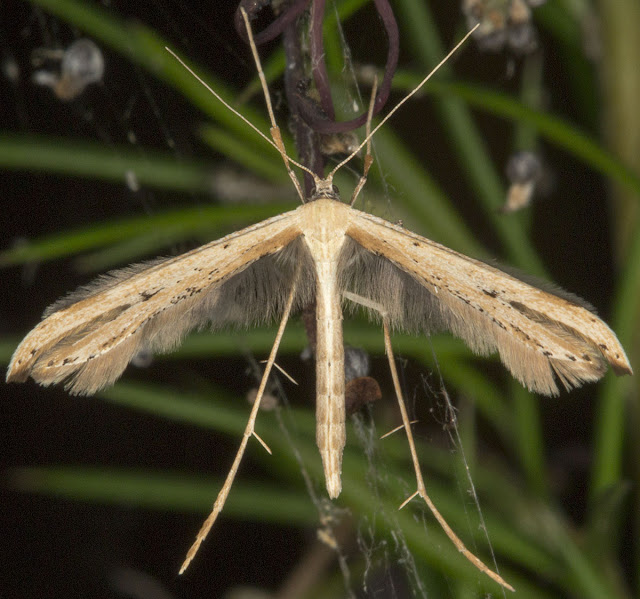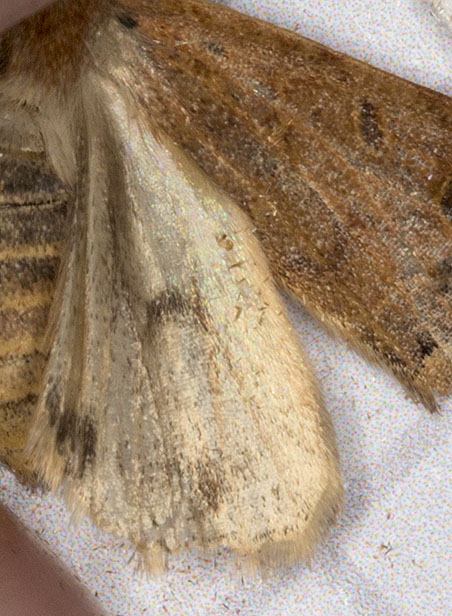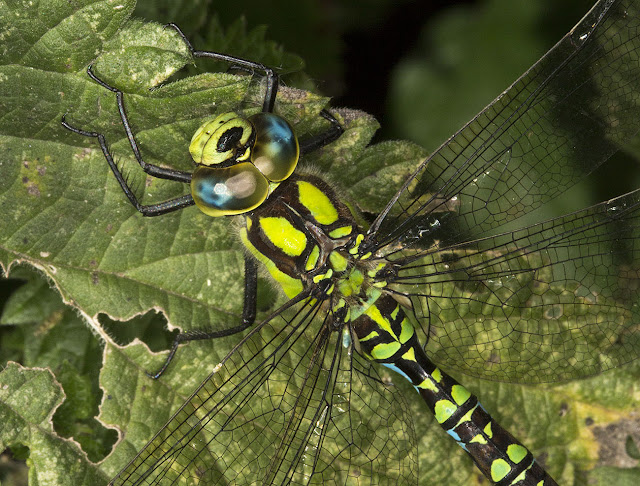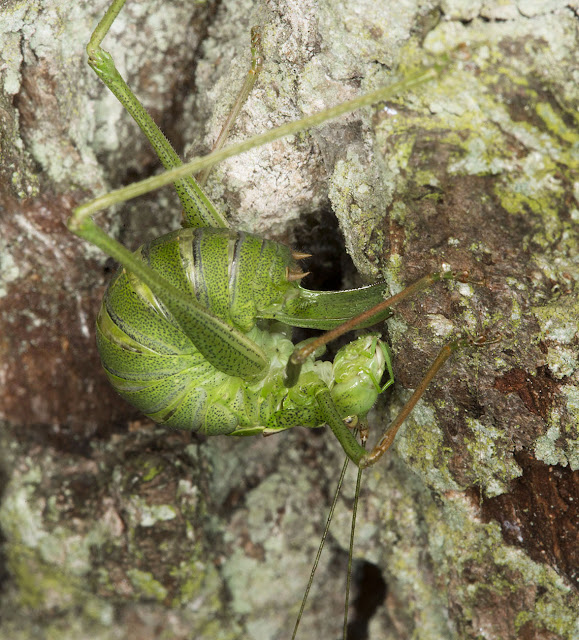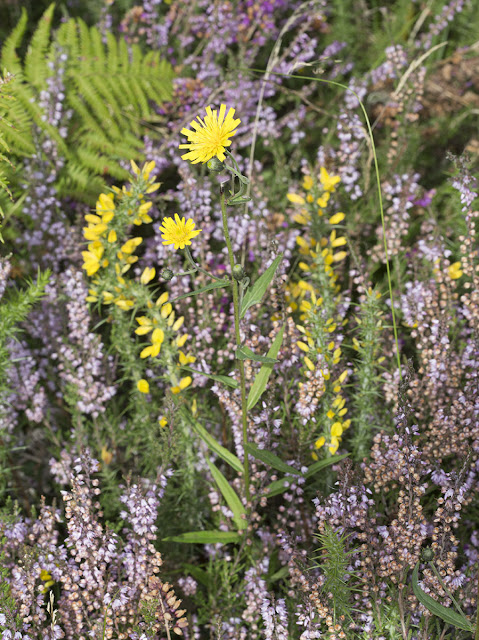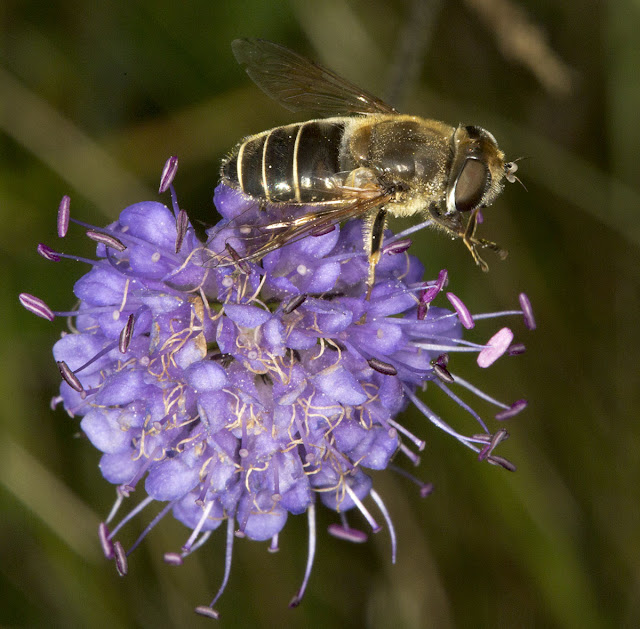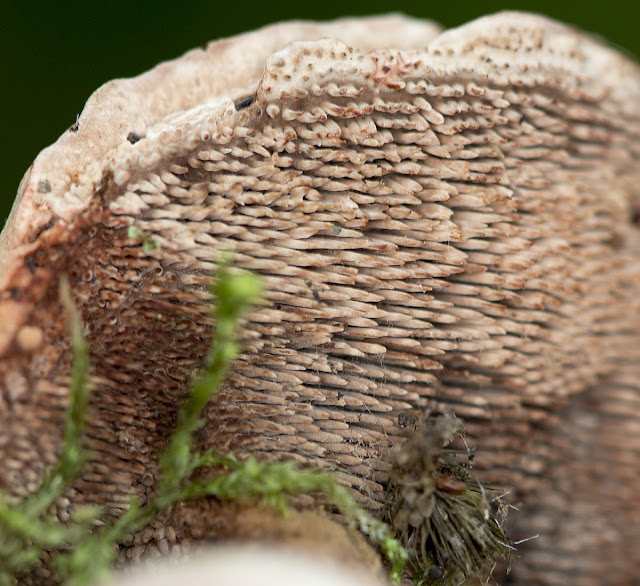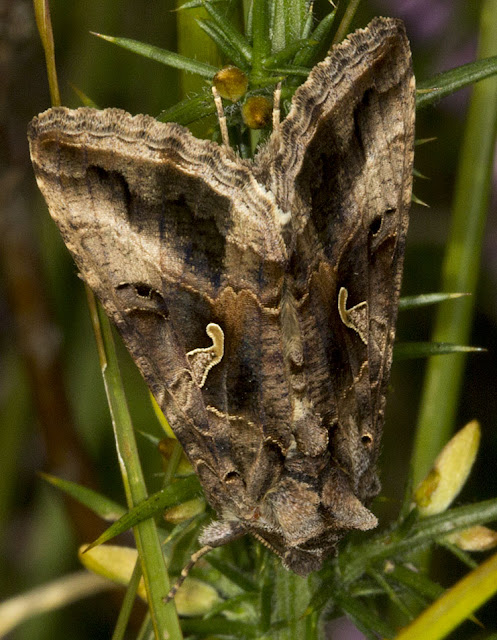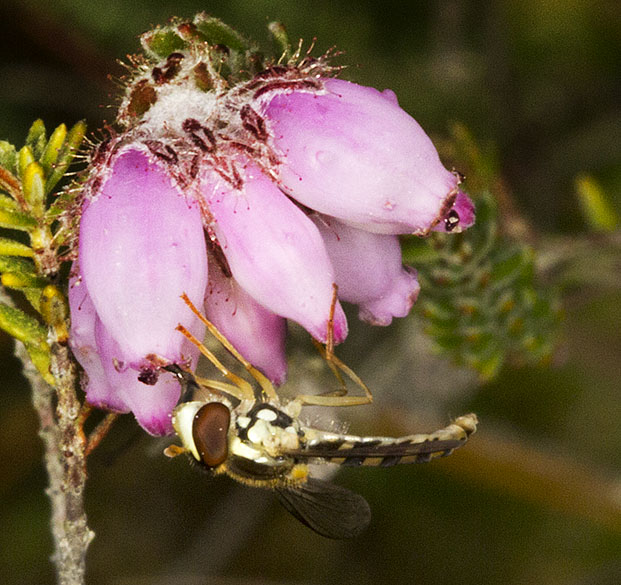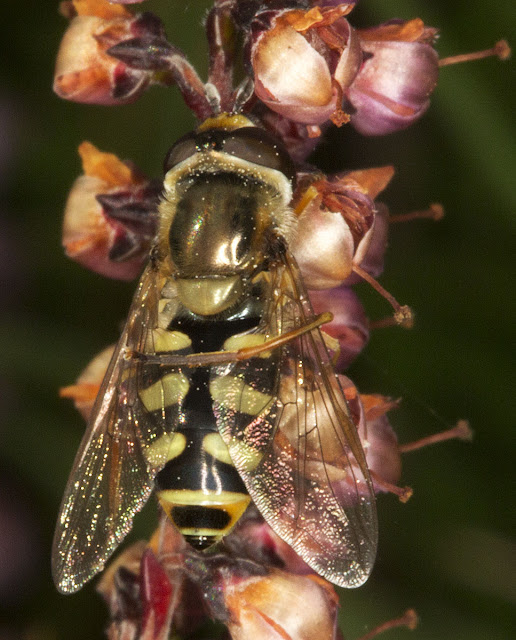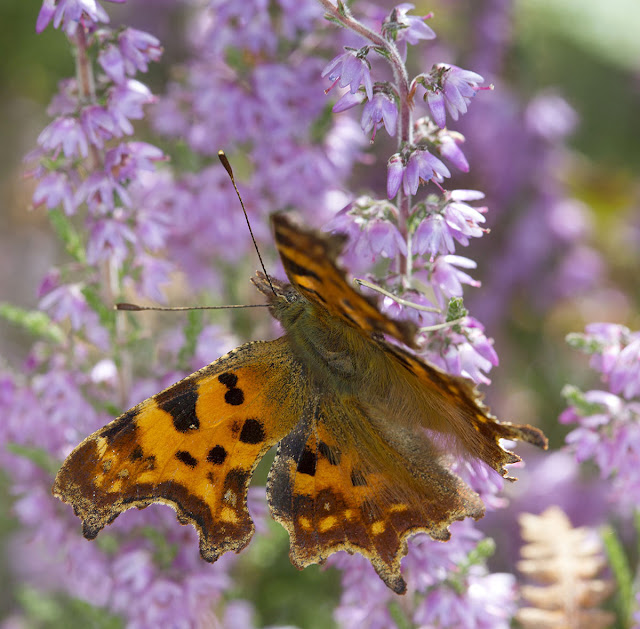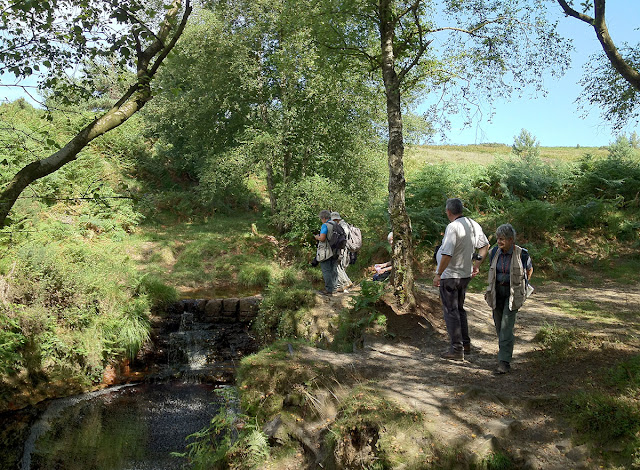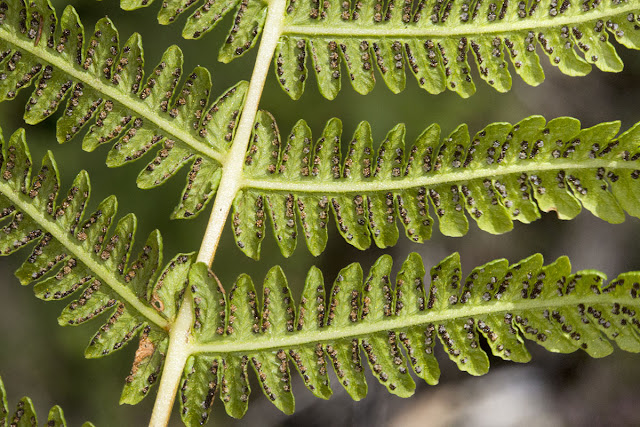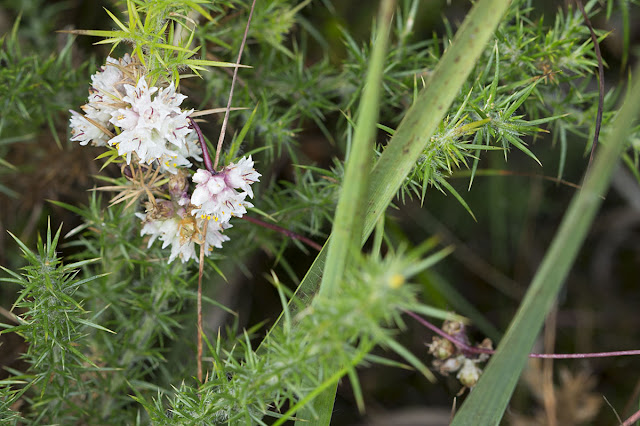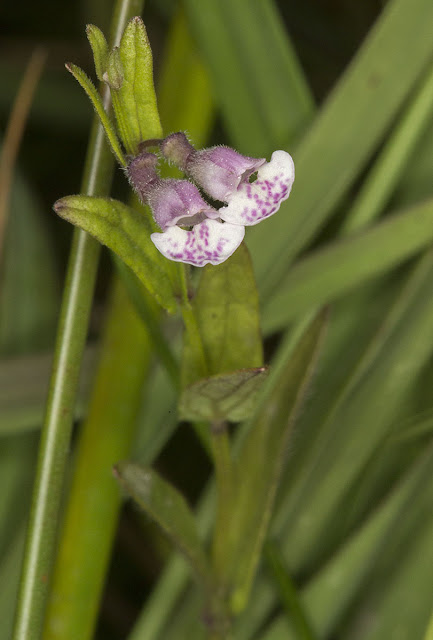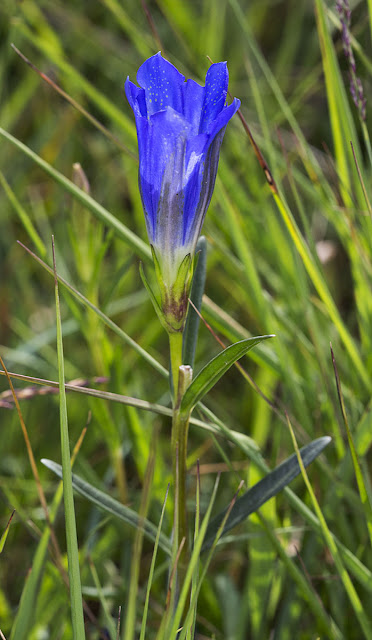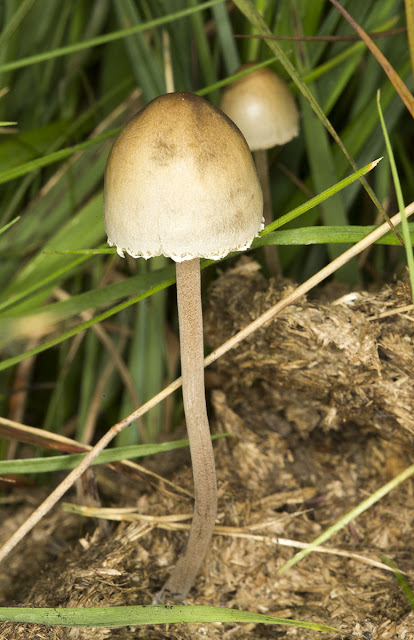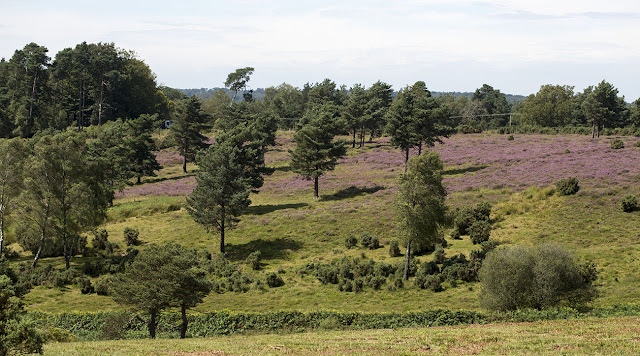 |
| View over the Forest from near a car park called Lodge. Ashdown Forest, 17 August 2012. |
Having gone down to see the Marsh Gentians, shown in my last post, we moved on to another car park on the far side of the main depression. In that car park I found a small plant which is very ordinary, but interesting to me.
 |
| Flower of Lesser Hawkbit, Leontodon saxatilis. Ashdown Forest, 17 August 2012. |
The reason for my interest is that there are many flowers that look superficially like this, yellow composites, and I am learning to distinguish them. This one has a smooth calyx, and the sepals have a dark outline. The other diagnostic feature is ...
 |
| Leaf hairs of Lesser Hawkbit, Leontodon saxatilis. Ashdown Forest, 17 August 2012. |
The leaves are hairy, and the hairs are forked at the tip. You can just about see this with the naked eye once you know what to look for, but a hand lens is better. You do not need any other tool than a hand lens to identify almost any British flowering plant. Those three features in combination tell you what this plant is.
But moving on to slightly more exotic flora ... From that car park, a path leads downhill, past the view of the purple heather shown above, to a level where a spring emerges. At that point it is particularly boggy, and that is where you can find Round-leaved Sundews.
 |
| Round-leaved Sundew, Drosera rotundifolium. Ashdown Forest, 17 August 2012. |
This ground is so wet, and so poor in nutrients, that not many species can grow here, and there are many small open spaces. This Sundew is growing amongst Sphagnum moss, which need to be permanently moist and which keeps its immediate surroundings the same. The red hairs on its round leaves are tipped with sticky drops which both attract and trap small insects. The leaf will then fold over, like the one at the bottom, and digest the insect.
 |
| Keeled Skimmer, Orthetrum coerulescens. Ashdown Forest, 17 August 2012. |
In fact there must be plenty of local insect life, or this dragonfly wouldn't live here. Keeled Skimmers specialise in this sort of acid bog area. I didn't get very close to this one. Stalking insects through a bog is not all that easy! But coincidentally, I saw another insect right where I was standing.
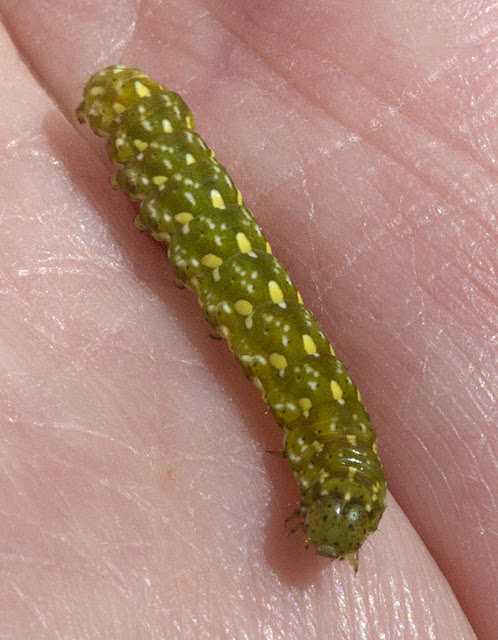 |
| Larva of Beautiful Yellow Underwing, Anarta myrtilli. Ashdown Forest, 17 August 2012. |
This caterpillar will turn into a rather pretty moth in time. Meanwhile, it eats heather. That colour scheme camouflages it well on its normal food plant.
A few more Ashdown plants next time.


